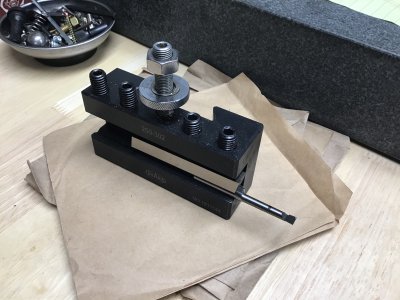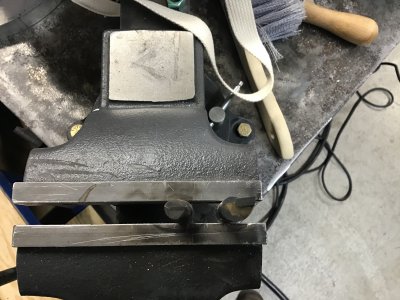- Joined
- Nov 17, 2017
- Messages
- 1,525
The trick with boring bars is that they are never SMALL enough, big enough is rarely a problem.
I have a number of insert boring bars (bottom feeders from china:: 6mm, 7mm, 8mm, 10mm, 12mm) that are perfectly capable of 0.31 and larger
But I have needs to bore holes of 0.247,5 as races for 1/4" ball bearings pressed in with thumb pressure.
measuring that small ID accurately enough is also a big problem.
For big stuff, I will drill 1/2, 3/4 and 7/8 before starting to bore with a 16mm boring bar.
I generally use CNMG inserts but will substitute CCGT when doing aluminum or brass.
I have a number of insert boring bars (bottom feeders from china:: 6mm, 7mm, 8mm, 10mm, 12mm) that are perfectly capable of 0.31 and larger
But I have needs to bore holes of 0.247,5 as races for 1/4" ball bearings pressed in with thumb pressure.
measuring that small ID accurately enough is also a big problem.
For big stuff, I will drill 1/2, 3/4 and 7/8 before starting to bore with a 16mm boring bar.
I generally use CNMG inserts but will substitute CCGT when doing aluminum or brass.


